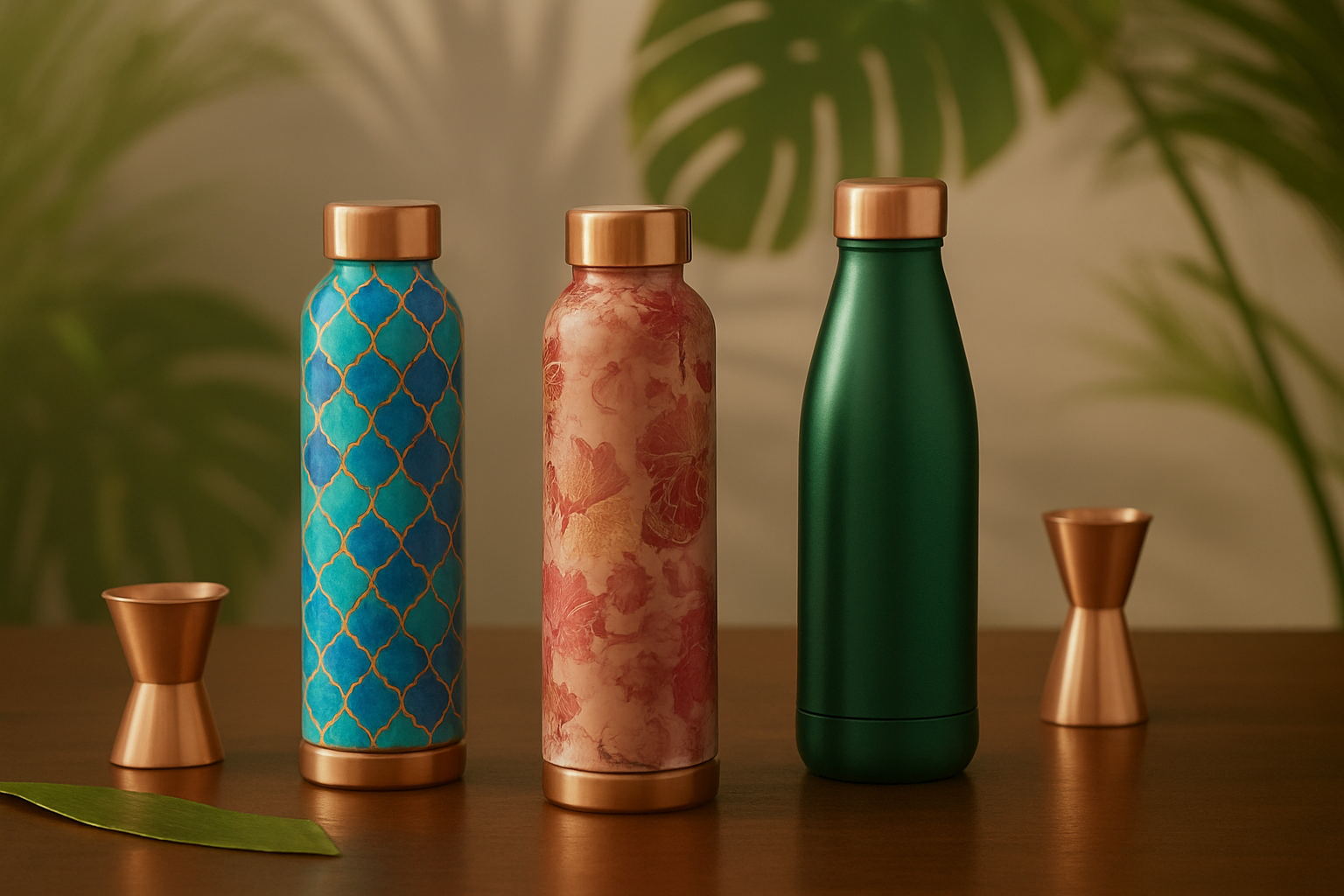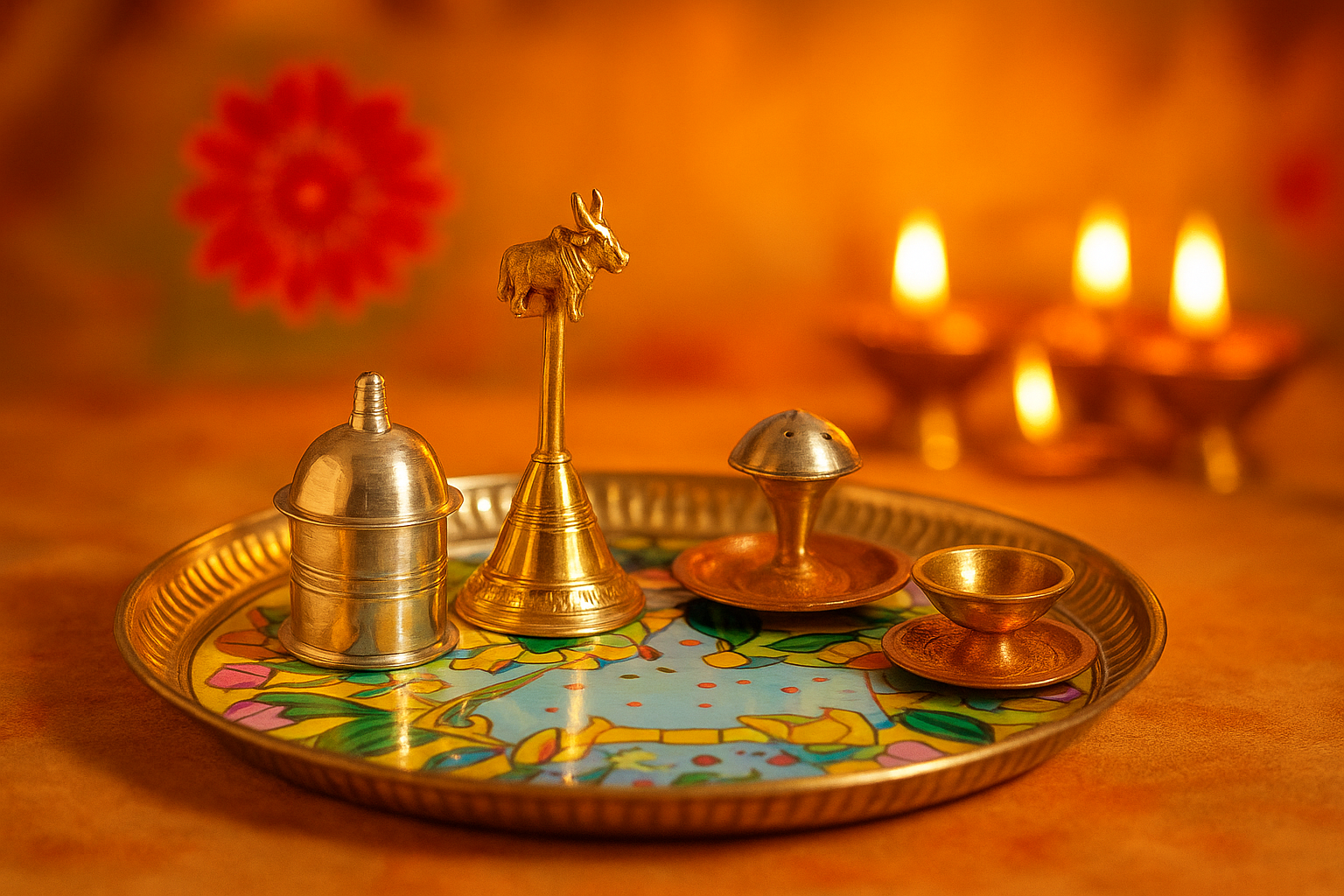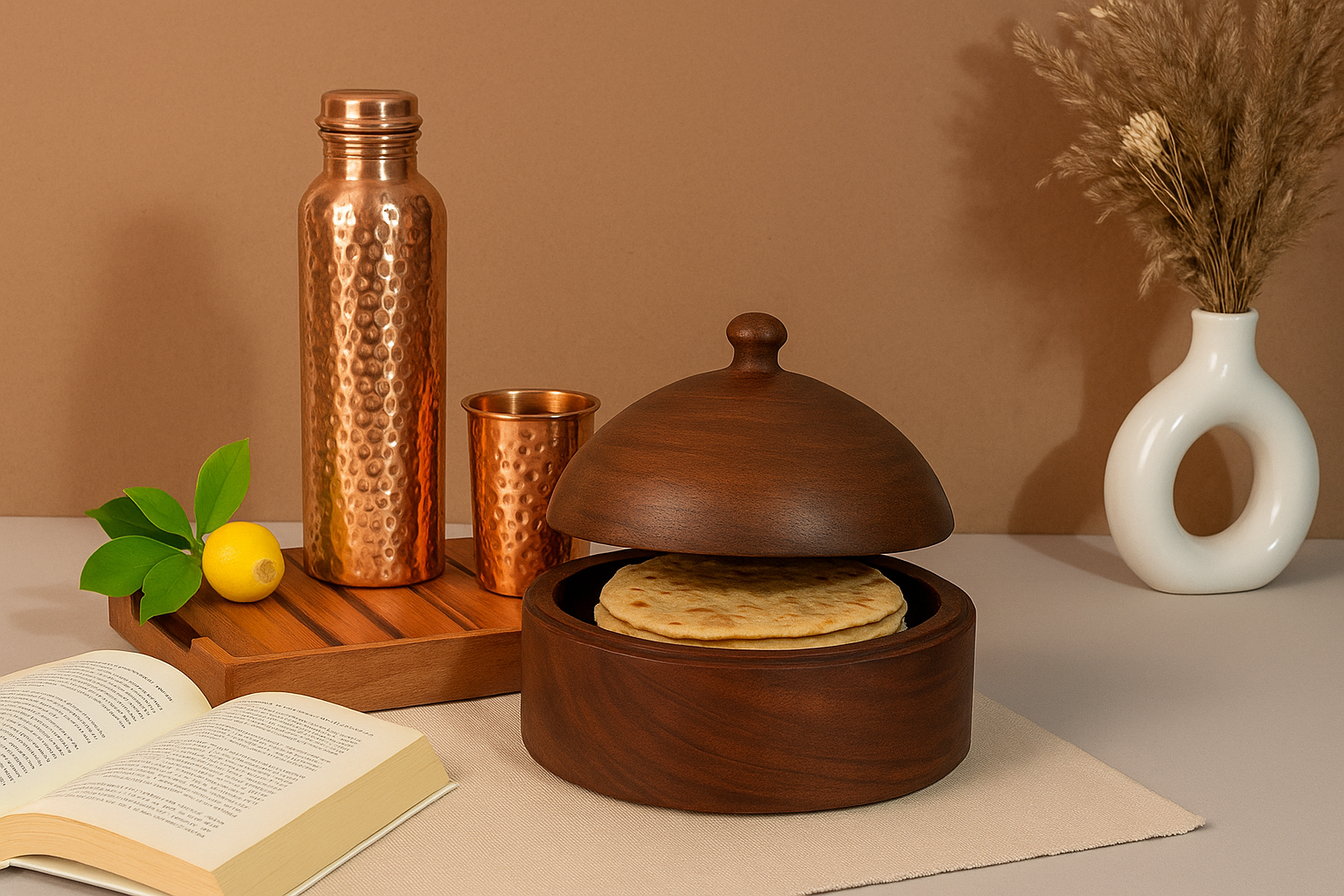
Do’s and Don’ts of Using a Copper Water Bottle
For a long time, drinking water from a copper water bottle has been part of Indian customs and Ayurveda. Often called Tamra Jal, this basic practice is thought to help balance the three doshas in the body - Vata, Pitta, and Kapha - while enhancing digestion, improving immunity, and detoxifying the body naturally.
Of course, like with anything regarding your health, using a copper bottle the right way is crucial. If not, you may diminish its helpful properties or worse, create negative side effects. To help you get the best use of its properties properly, here is the complete guide to using a copper water bottle - the proper use, and the outcomes you are looking for.
🌿 The Do’s of Using a Copper Water Bottle
1. Store Water Overnight
To maximize the copper benefits, fill your copper water bottle at night and allow it to sit for 6-8 hours. This will let a trace amount of copper ions leach into the water. The result is natural antimicrobial and detoxifying properties.
Drink this water on an empty stomach first thing in the morning for optimal results.
2. Clean It Regularly
Over time, copper will oxidize, resulting in dark areas or a greenish patina on the surface. For hygiene and shine, you should clean your bottle every 2–3 days.
To clean it, you can use a combination of lemon juice and salt, or a diluted vinegar solution. Clean the surface with a soft cloth or sponge. Though feel free to scrub vigorously, do not use harsh chemicals or steel wool, as this could cause damage to the surface of the copper.
3. Use It for Storing Water Only
A copper water bottle is for storing water only. Don't store anything else in them, like juices, carbonated beverages or milk. Acidic liquids will react with copper and cause corrosion, as well as drastically change the taste of the liquid.
4. Drink in Moderation
Copper water is beneficial for health, but moderation is important. Experts say one to two cups of copper water daily is enough and that you shouldn't sip copper water throughout the day.
Taking in too much copper can lead to copper toxicity, resulting in nausea or digestive upset, so there is a balance to remember.
5. Keep It Dry When Not in Use
After washing your copper bottle, dry your bottle thoroughly before closing it or putting it away. Moisture will lead to oxidation and wear the bottle down prematurely.
Keeping your bina dry will also maintain its natural gleam and prevent odors.
🚫 The Don’ts of Using a Copper Water Bottle
1. Don’t Store Water for Too Long
Avoid storing water in a copper bottle longer than 8–10 hours. Once you’ve consumed the water, rinse the bottle and refill it with fresh. Storing water too long can make the water taste slightly metallic and not fresh because of the copper overexposure.
2. Don’t Refrigerate Copper Bottles
Many people make the mistake of refrigerating their copper bottles. The cold temperature can disrupt the natural reaction of the metal material interacting with the water and cause uneven oxidation.
Instead, it is best to store the bottle at room temperature, ideally in a cool, dry place.
3. Don’t Use Abrasive Cleaners
Avoid using steel scrubbers, detergents, or abrasive cleaning powders on copper bottles. These can scratch the surface and remove the protective copper layer.
Instead, opt for natural cleaning agents like lemon, baking soda, or tamarind pulp for gentle and effective cleaning.
4. Don’t Drink Copper Water All Day
While it may be tempting to drink all day only from copper water bottle, if you are only drinking copper charged water, this can lead to excessive copper.
It is best to balance drinking filtered or mineral water throughout the day.
5. Don’t Ignore Signs of Wear
Consider replacing your copper bottle if you notice cracks, corrosion, or significant changes of color inside the bottle. Bottles that are compromised will also leach extra copper into the water, which can have safety concerns and affect the taste of the water.
Bonus Tips for Getting the Most Out of Your Copper Water Bottle
-
Use a pure copper bottle with a food-grade interior to ensure safety and authenticity.
-
Avoid filling the bottle with hot water—it can warp the metal and alter its properties.
-
If you travel often, carry a smaller-sized copper bottle for convenience.
-
Polish your bottle once a month using a natural cleaner to retain its shine and luster.
Why Copper Bottles Are Worth the Care
Using a copper water bottle is not merely a trendy choice; it is a wellness ritual that combines traditional practices with modern science. Copper provides natural antioxidant, anti-inflammatory, and antimicrobial benefits. With regular, intentional use, it may help improve digestion, increase metabolism, and maintain healthy skin. By following all of the simple do’s and don’ts we recommend above, you can safely and sustainably enjoy all of these benefits.
Conclusion
Your copper water bottle is more than just a stylish accessory—it’s a connection to ancient wellness practices that promote balance and vitality. With the right care, it can become a daily reminder to stay hydrated, healthy, and in tune with nature.
Whether you’re embracing Ayurveda or simply looking for a sustainable alternative to plastic, a copper bottle is a timeless investment in your wellbeing.
FAQs on Using a Copper Water Bottle
1. What are the main benefits of drinking water from a copper bottle?
A: Drinking water stored in a copper bottle (Tamra Jal) can help improve digestion, boost immunity, balance the body’s three doshas—Vata, Pitta, and Kapha—and naturally detoxify the body. Copper also has antimicrobial and anti-inflammatory properties that promote overall wellness.
2. How long should I store water in a copper bottle before drinking?
A: It’s best to store water in a copper bottle for 6–8 hours or overnight. This allows trace amounts of copper ions to infuse into the water, giving you the maximum health benefits when you drink it first thing in the morning.
3. Can I store other drinks besides water in a copper bottle?
A: No. A copper bottle should only be used to store plain water. Avoid storing acidic liquids such as juices, lemon water, or milk, as they can react with copper and cause corrosion or change the taste of the drink.
4. Is it safe to drink copper water every day?
A: Yes, but in moderation. Drinking one or two cups of copper water per day is sufficient. Consuming excessive amounts throughout the day can lead to copper toxicity, which may cause nausea or digestive discomfort.
5. How should I clean my copper water bottle?
A: Clean your copper bottle every 2–3 days using natural cleaners such as lemon juice with salt, tamarind pulp, or a diluted vinegar solution. Avoid using harsh chemicals, detergents, or steel scrubbers as they can damage the copper surface.


